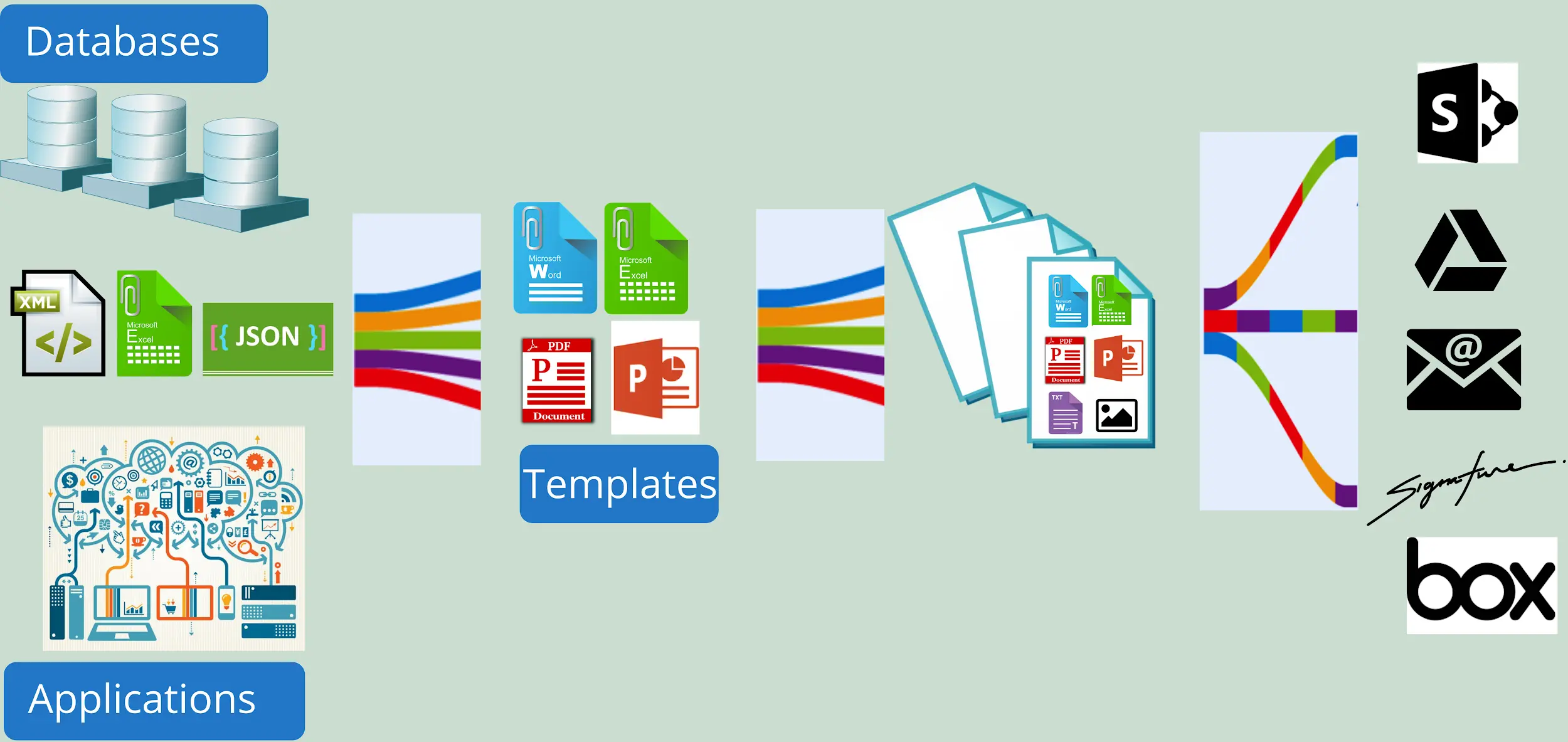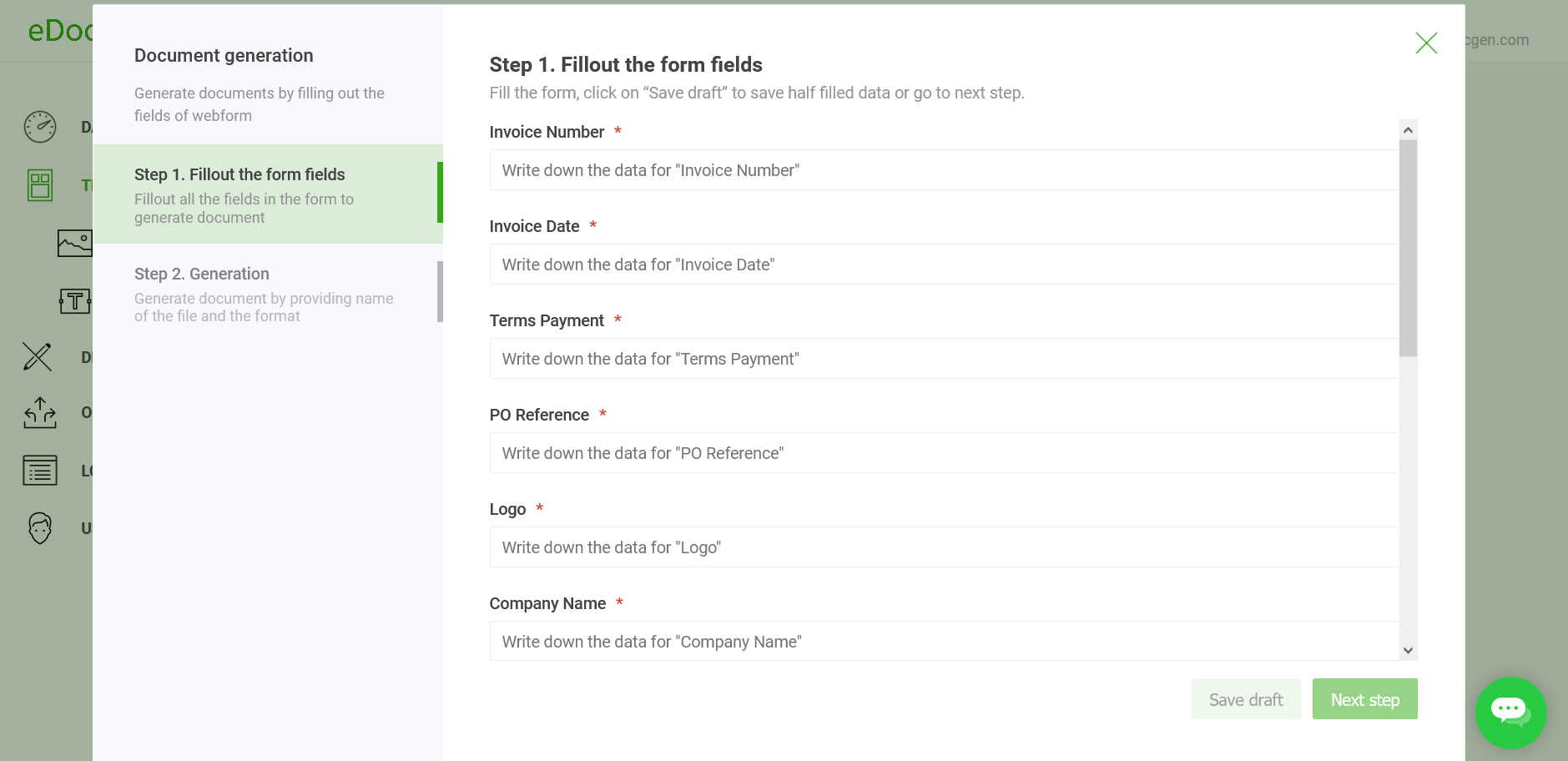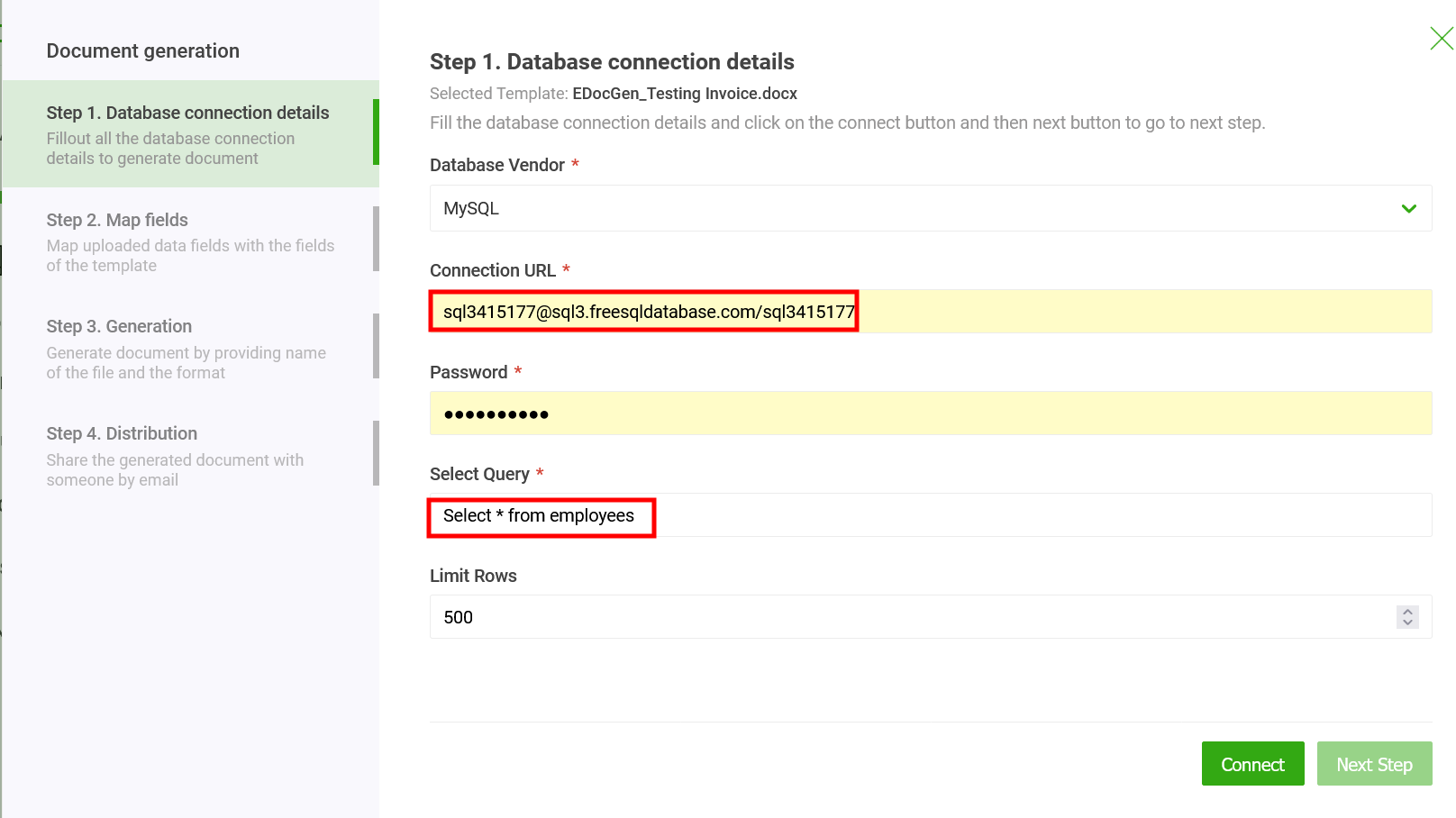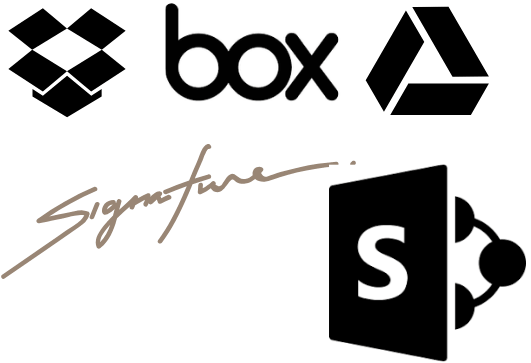Document Automation
If there is a choice to use a tool to automate your
business document workflows, will you ever fill a template manually? The answer is obvious.
Manual filling of the templates is expensive, slow, and error-prone.
Moreover, it’s one of the most boring jobs to do.
Document automation systems reduce the risks associated with human errors and the time spent on quality checks. They help businesses to improve
-
Customer communications.
-
Business efficiencies and employee productivity.
-
Reduce cycle times.
Each organization's document automation needs are unique. They range from the creation of region-specific multi-lingual complex documents running into hundreds of pages to simple letters. It also depends on the industry.
-
Insurance - insurance quotes, proposals, policy documents.
-
Financial institutions - Statements, customer onboarding, and loan documents.
-
Real Estate - Contracts, purchase & sale agreements, leases, and other documents.
The following are the three modes of document automation.
-
Interactive: In this, users fill out the form (questionnaire) generated from the template to create a document. It's useful for creating onboarding documents, product guides, support manuals, etc.
-
Batch/Bulk: The system creates thousands or even millions of personalized and distinct documents. It automates the creation of documents by populating structured data into templates. Data could be residing in enterprise databases , applications, or file formats such as XML/JSON/Excel. It's useful for the creation of invoices, letters, and other business documents. Modern systems not only create documents, they also offer multiple distribution channels such as e-sign, Email, SMS, etc.
-
On-Demand: Based on a user action the document generation happens on the fly. For example, on inquiry submission, you can send out a proposal. You can even create complex document-based workflows.
Basic document automation system features
Despite the many benefits, document automation system brings about, the vast majority of organizations haven’t adopted them. They settled for limited functionality macros, reporting tools, and document assembly add-ons of enterprise apps. However, they cost a fortune in the long run.
-
The templates have to be coded. Thus, they are maintenance heavy. Business users cannot make changes to their templates and need continuous developer support.
-
They are slow and painful to generate thousands of documents.
This limits their utility as an enterprise solution. For your organization's digital transformation journey, you need an enterprise document automation microservice. Let’s examine the basic features a good document automation system should have.
-
For an organization with a growing library of document templates and multiple offices, the system must support multi-lingual template documents and conditions.
-
The system must have a well-defined API for integrating into other systems and databases. These integrations bring about digital transformations.
-
It should support all three modes of document automation – interactive, bulk, and on-demand.
-
The system should support the document creation needs of the entire organization, not just legal or sales or operations. The piecemeal approach of having multiple document automation systems drains organization resources. Each of these systems would follow a different template notation. Thus, template standardization becomes an issue leading to a lot of confusion.
-
Last but not the least, the system must support the generation of various document formats including PPTX, PDF, Word, HTML, Excel, Images, and TXT.
Buy vs Build
While building an in-house solution may seem appealing for customization or cost-saving reasons,
the hidden costs, scalability issues, and lack of advanced features often outweigh the benefits.
Off-the-shelf document automation software provides a faster, more reliable, and cost-effective alternative
that supports long-term growth and innovation.
1. Scalability Challenges
-
In-house solutions often lack the flexibility to scale with
growing business needs, leading to inefficiencies and bottlenecks
as document volumes increase or processes evolve. Scaling such
solutions across departments or branches with unique workflows can
be costly and time-consuming.
-
Off-the-shelf solutions are designed with scalability in mind,
ensuring consistent performance as businesses grow.
2. Limited Features and Innovation
-
Home-grown solutions typically focus on immediate needs and lack
advanced features like AI-driven automation, seamless
integrations, and cutting-edge updates. Keeping pace with industry
advancements requires significant ongoing investment.
-
Commercial solutions are built on industry best practices
and are continuously updated to meet evolving customer expectations, offering a broader range of functionalities.
3. High Costs of Development and Maintenance
-
Building software in-house involves substantial upfront costs for
development, hiring skilled staff, and acquiring necessary tools.
Additionally, maintenance, updates, and troubleshooting create
ongoing expenses that are often underestimated.
-
Off-the-shelf solutions come with predictable licensing fees that include
updates, support, and maintenance, reducing long-term financial strain.
4. Time-to-Market Delays
-
Developing an in-house solution requires extensive planning,
design, testing, and deployment phases, which can significantly
delay implementation. This delay can lead to missed business
opportunities and competitive disadvantages.
-
Pre-built solutions can be deployed quickly, enabling businesses to
realize benefits almost immediately.
5. Organizational Focus
-
Building software diverts internal resources from core business
activities to software development and maintenance. This shift can
hinder strategic initiatives and reduce organizational agility.
-
Buying software allows companies to focus on their primary goals while
leveraging the expertise of specialized vendors.
Next-gen document automation system
EDocGen is perfect for an organization with a large number of complex templates. It addresses every document type possible including invoices, contracts, proposals, legal documents, etc.

It’s a cloud document automation platform for generating documents from applications, databases, and structured data. What separates it from the rest is its business user-friendliness. Business users can use existing document templates for document creation. They can generate documents without IT intervention, with a minimal learning curve.
It supports on-demand, bulk, and interactive document automation.
-
For interactive, the document automation system auto-generates fillable forms from existing templates. Business users can fill these forms themselves or share the form URL with customers and vendors. Submission of forms creates documents. For large forms, users can save partially filled forms as drafts before final submission.

-
Populate XML, JSON, Excel , data for batch document generation. You can populate Oracle, SQL Server, MySQL and MongoDB data directly for creating documents in bulk.

-
It is an API -first product. You can integrate it with every possible application in the organization including CRM, ERP, HRMS, etc. for on-demand document generation.
-
Supports almost all special cases including the population of multiple templates in one go.The Sequential population of data files.8-Level JSON data population.Vertically oriented Excel data population.
The tool supports the dynamic population of text, tables, images, paragraphs, and reusable content blocks.
-
Text – Populate dynamic text fields in the document template.
-
Table – Populate tables in the template by adding rows dynamically.
-
Image – Auto-fill images into the template at runtime.
-
Content Block – Reusable content blocks can be inserted into the document template at runtime
-
Hyperlinks - Populate clickable hyperlinks.
-
Conditional Statements – IF/ELSE for customizing document creation as per business requirements.
-
Calculations – Arithmetic operators +, -, *, / for performing calculations on dynamic data.
Every organization has unique document requirements. The document automation software is flexible to address these requirements.
Template and Digital Assets Governance
The system offers a central repository for storing the organization's business templates and digital assets. With a fine-grained authorization mechanism, template rights management is built into the system.
Business users can edit their templates in native editors. For example, Microsoft Word templates can be modified in Word itself. No separate designer or add-on is required.
After editing the templates, admins/managers can upload the templates into the system. Thus, the online central repository holds all approved templates. This ensures employees are using only the latest templates and other digital assets. This is especially useful for remote employees ensuring brand and process consistency.
Document Distribution
The tool allows document distribution through multiple channels - Email, print, e-sign, syncing to cloud storage, etc.
The system auto-sends the generated documents as attachments from your business email.

The use cases for document automation software are endless. If your organization is on a path to digital transformation, using the right one is key to achieving success.





